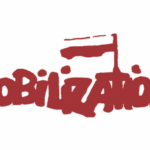This chapter analyses the different frames that emerged during the mobilizations of precarious workers that occurred in Italy in the early 2000s, involving hundreds of thousands of protesters all over the country. In the past, workers’ movements had been rather homogeneous, representing workers who experienced very similar working and living conditions. In this sense, it was possible to speak about a rather homogeneous working class that developed mostly in the urban environment, around factories whose workers shared similar visions about themselves and their role in society. In advanced capitalistic societies, workers’ movements progressively lost their centrality in the struggles towards a more just society. At the same time, the trade unions, the institutional political actors that once represented them — also an outcome of workers’ movements — severely shrank in membership, with union density collapsing in the last decades. Workers, though, did not disappear from contentious politics. And neither did workers’ organizations, broadly conceived. Rather, they changed the way in which they engaged in protests, the organizational forms they selected to mobilize, and the discourses they elaborated around labour issues. This happened also because, despite the relevant heritage of unionism for workers, the very structure of the labour market changed dramatically in the past few decades.
Mattoni, A., 2015. The Many Frames of Precarious Condition. Some Insights from Italian Mobilization against Precarity. In D. della Porta et al., eds. The New Social Division. Making and Unmaking Precariousness. Basingstoke, UK: Palgrave MacMillan. Availab28/10/2025

14/10/2025

Journal Article - 2025
Journal Article - 2023
Journal Article - 2023
Journal Article - 2023
Journal Article - 2023
Monograph - 2023
Monograph - 2022
Monograph - 2022
Journal Article - 2021
Journal Article - 2021